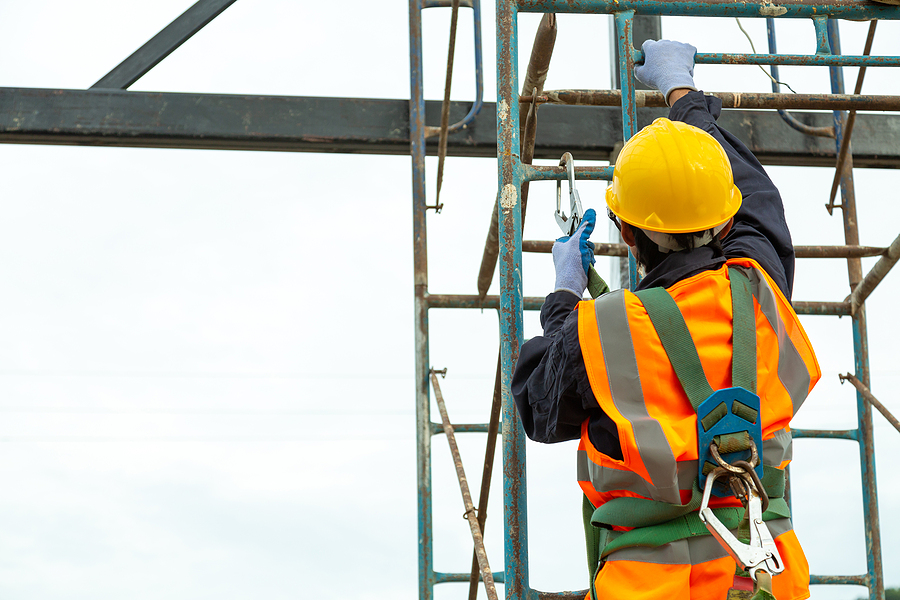Scaffolding Safety Methods Every New Mexico Contractor Needs to Know

In the construction industry, falls are the primary cause of occupational injuries and fatalities. Find out more about typical scaffolding risks, OSHA safety rules, and advice on how to prevent falls and injuries among workers using scaffolding.
On building or restoration projects, scaffolding is used as a temporary framework to support labourers and enable them to carry out their tasks. They are often used off the ground, at elevated, or at greater height. Appropriate scaffolding is often composed of steel and/or wood, and it is strong enough to support the whole weight of construction workers as well as any necessary tools.
Nonetheless, over 62% of construction workers are exposed to heights where their centre of gravity is more than five feet from the ground, according to the U.S. Bureau of Labour Statistics (BLS). These employees are more likely to get injuries from falls while working at heights of any kind. Additionally, scaffolding caused accidents to 3,250 employees in 2020.
Typical Scaffolding Risks
The following are a handful of the most typical scaffolding risks:
- Not having appropriate fall protection equipment when working at heights
- Instability or overloading of scaffolds, which can make them collapse
- Workers getting struck from the falling items. They include construction materials, tools, and debris.
- Close proximity to overhead power lines. This will increase the risk of electrocution.
It has been identified that more than 86% of scaffolding deaths happen within the construction industry. It mainly happens due to the following reasons.
- Not having proper protection in place for the construction site workers
- Failing to provide a proper training for the workers.
- Allowing people to work in unstable work surfaces.
- Workers allowed to stay on scaffolding alone during work hours.
OSHA Regulations and Employee Training Regarding Scaffolding Safety
Since 1971, OSHA has maintained a scaffolding safety standard, which has undergone many updates throughout time. The safety requirements that govern the design, manufacture, and use of scaffolds in the construction sector are outlined in this regulation. It provides an explanation of fall safety measures as well as the training that workers who use scaffolding must complete before being allowed to use it.
Workers should get the necessary training and familiarisation with OSHA standards, since employers are accountable for ensuring compliance. Employers are required by the OSHA standard to abide by a number of restrictions, including:
- Requirements for weight capacity on every scaffold
- Fall protection standards
- Access and usage criteria
- Scaffold platform construction requirements
- Criteria for supported scaffolds and suspended scaffolds.
Ensuring protection against falling objects
OSHA also provides scaffold safety training. When OSHA updated its scaffold regulations in 1996, the Bureau of Labour and Statistics discovered that 25% of employees had never received any scaffold safety training. In order to shield employees against catastrophic scaffolding mishaps, training is essential.
Tips for Preventing Scaffold Accidents and Falls
Accidents involving scaffolding have the potential to cause fatalities as well as severe injuries. When working outdoors on scaffolding in bad weather, for example, workers run the risk of falling off an unsteady scaffold or from dangerous working circumstances. Scaffolding may pose a risk to those using it as well as others working nearby if appropriate safety precautions are not taken. Here are seven crucial guidelines for scaffolding safety to remember:
1. Examine everything before using it
Make sure that every part is tight, safe, and undamaged before permitting employees to erect scaffolding. Look for items like ties, connections, and guardrails that are broken or missing.
2. Make Use of Fall Safety
Verify that the guardrails are securely installed. When working at heights, employees should also wear personal safety equipment, such as hard helmets, harnesses, and lanyards.
3. Pay attention to load capacity guidelines.
According to OSHA, “each scaffold and scaffold component must support without failure its own weight and at least four times the maximum intended load applied or transmitted to it.” This means that you should never exceed the maximum load capacity of the scaffold. Additionally, be careful not to overburden one side of the structure and to distribute weight equally.
4. Verify the Security of the Scaffold
Scaffolds should be secured via bracing, tying, or similar techniques. To avoid tipping or movement, scaffolds must also be firmly fixed to the building structure.
5. Ensure a secure workspace
It is recommended to erect warning signs around the scaffold to notify both pedestrians and employees of any possible risks. Furthermore, make sure the work area is clear of clutter and garbage, and mop up spills right away to avoid creating slick surfaces close to the scaffold.
6. Use Appropriate Entry
When scaffold platforms are located below a point of access or more than two feet above the ground, OSHA states that employers are required to provide access. It is best to utilise steps or ladders for safe and secure access to the scaffold rather than boxes or other unstable things.
7. Skilled Personnel
For all personnel to be able to identify typical scaffolding dangers and learn how to minimise them, they must get frequent training from a trained professional. Training should include the unique risks, such as electrical dangers, falls, and falling items, in addition to how to operate the scaffold and manage materials while it is in use. Scaffolding should only be used by qualified people.
By using these safety measures, construction projects may operate more efficiently overall, save downtime, and avoid employee accidents.
